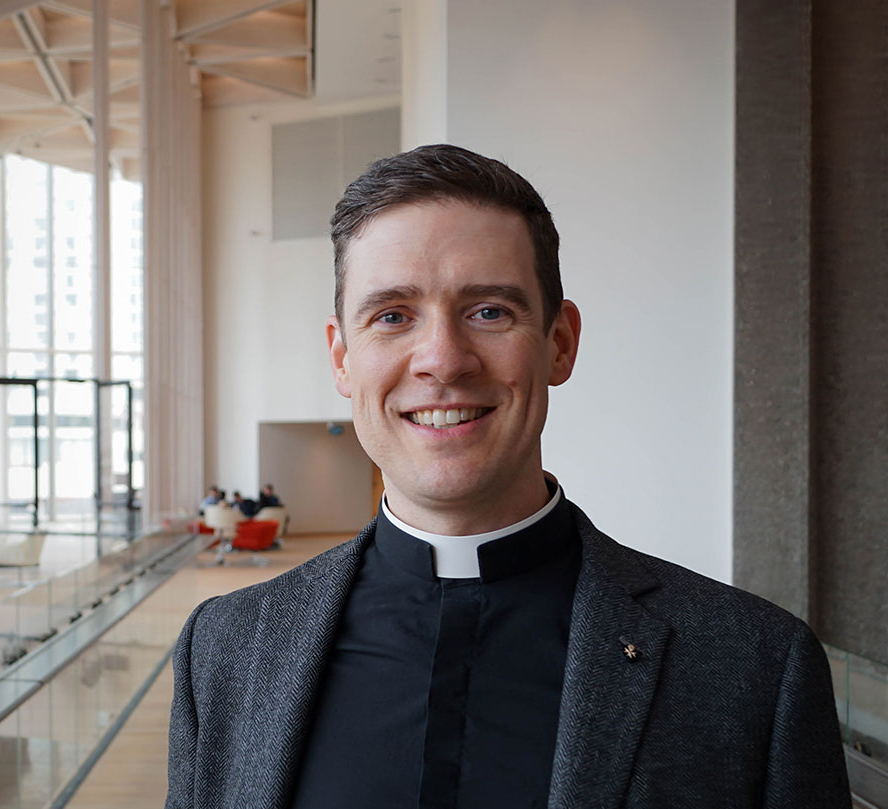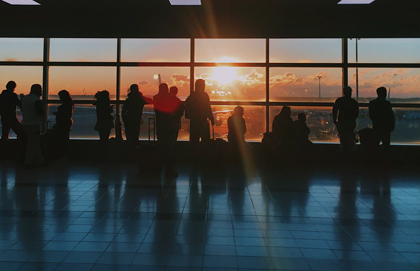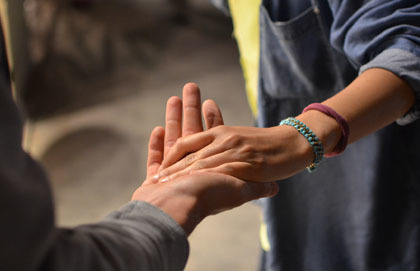June 1, on certain Church calendars, is the commemoration of St. Justin Martyr, also known as Justin the Philosopher.
St. Justin Martyr lived at the beginning of the second century. He was a Roman citizen, a patrician, well schooled in rhetoric, in philosophy. Having grown up in a pagan household, he embraced Christianity after perusing all sorts of different scholastic and philosophical schools. He confronted the persecution of Christians, one of the early persecutions that took place in Rome at the beginning of the second century.
The Roman authorities, the Roman government, the people of Rome felt that Christians were a threat to public order. They thought they were destabilizing the polis, they were destabilizing the imperial city because they were accused of being atheists who did not worship the household deities that had kept Rome safe for a very long time. They even refused to burn incense before an image of the Emperor.
St. Justin Martyr said, in an apology he wrote to the Emperor, that Christians are excellent people. What he meant by excellent was that Christians cared about what happened in the city. They were concerned that Romans took their newborn children and exposed them on the hillsides to die. They were concerned about how the city functioned. They were concerned about the welfare of its citizens.
St. Justin Martyr said: "Don't persecute us. We are excellent people."
I want to apply that to our understanding of the role of faith communities beyond simply Christian communities in our world today and in our cities today in Canada.
Members of faith communities are excellent people. They have demonstrated for a very long time, especially in this country as we mark 150 years of Confederation, the impact that faith communities have had in cities, and in our society.
We live in a secular State. Thank goodness. The government is not bound to any one Church, any one religious tradition, whether we're speaking about the federal, provincial or municipal government.
We do not live in a secular society. Don't let someone pull that fast one over on you. We live in a society that is a rich tapestry of many different faith communities that have helped to knit together our cities and our citizens through the work that they do.
As we say with our Faith in Canada 150 Initiative, this is Canada and faith matters. Faith matters where we live.
The role of faith communities in this country is profound. Not simply in the last 150 years, but all the way back to pre-European contact where Indigenous religious beliefs helped to knit together those early communities.
We know this when we encounter faith communities in our cities through the hospitals that they have established. Whether we're speaking about the Bruyère hospital here in Ottawa, Mt. Sinai Hospital in Toronto, St. Joseph's Health Care System in Hamilton and in other parts of the Golden Horseshoe.
We know it, too, from schools, whether we're speaking about Catholic schools, Protestant schools, independent Jewish schools.
We know it from the communal kitchens that exist in every single Sikh temple across this country where people, it doesn't matter what your faith tradition is, if you need a meal, you can go into a Sikh temple or gurdwara and be fed.
Faith communities are about social welfare provision. Faith communities are also about beauty.
The Cardus Ottawa office sits at the conjunction of State and church. We are three doors down from Parliament Hill. And Notre Dame Cathedral is right behind us. The beauty of built religious architecture adds to our cities, whether it's the soaring nickel-covered spires of Notre Dame or the solid stone work of Knox Presbyterian just down Elgin. Architecture in shaping our cities has been part not just of the civic sphere, of the government sphere, of beautiful public buildings, but of religious communities.
In many cities, the first buildings that went up were religious: churches, synagogues, temples and so forth. Religious communities bring to our cities beautiful architecture but also beautiful music that rings out from these places of worship.
Whether it's a Mass by Palestrina coming out of Notre Dame Cathedral, whether it's hymns that are sung at Jubilee Christian Reformed, down at Maryville in Hunt Club, whether it's the worship that takes place at the small Hindu temple on Clara Street in the Glebe, it's about art and the beauty that exists in these churches, temples and gurdwaras.
It's also about the transmission of ethics, of virtue, of a moral sense these faith communities provide that gets brought into the urban square, where it helps to shape an understanding of citizenship by which we as citizens we are responsible for one another.
We're responsible for human flourishing. We have a responsibility to one another. Faith communities help to shape this, and have for centuries. I would go so far as to say that cities as political entities, the institutions that govern our cities, must be the public guardians of religious freedom. Since religious freedom is ordered towards people being fully who they are, whether you believe a particular theistic belief, whether you are a secular humanist or an atheist, it's the responsibility of our civic institutions to ensure that this is allowed to flourish for the good of all. We need to ensure that people of faith who live in our cities have the freedom to be people of faith publicly as well as privately.
Unfortunately in this country, for too long we have existed under what I call the post-enlightenment myth of religion being a purely private matter. This is not historically accurate, and for most of us, depending on our religious tradition, it is not theologically accurate. For millennia of human history, we have lived out our metaphysical beliefs, our practices, in the public square.
In Rome, at the time of Justin Martyr, the faith of the Roman people - the worship of the emperor, of the household deities - was done publicly and privately. If you're worshiping according to the Hindu tradition, it is a very public tradition. You can't go to India and not be confronted by the public nature of religious practice.
That was a core element of Canadian urban life for a very long time. Unfortunately, we've seen a shrinking of it. I think we need to find ways together to correct that trend, and to really ensure that people of faith are not being marginalized. Cities, the civil society groups that exist in the cities, municipal institutions, have to champion and support faith communities so they might go about their valuable work in building our common life helping to shape how we live together, advancing human flourishing.
I want to conclude with what I call five provocations perhaps for faith-filled cities.
- What does a city look like that encourages and facilitates public displays of faith for all communities? What does a city look like when, instead of restricting building of places of worship, it actually encourages the Hasidic Jewish community on a festival like Simchat Torah, when they're celebrating the joyous completion of the reading of the Torah for that year, to bring it out into the streets and have the celebrations so that everyone can see faith professed in a public way? What does it look like in a city like Mississauga where the Hindu community at the time of celebrating Durga Puja, this great festival, is processing to the streets with all these wonderful floats, these wonderful tributes to their particular tradition? What does it look like in a city like Edmonton where all of the different Eastern Christian communities in the early hours of Easter Sunday morning are supported and encouraged to be out processing around their churches in the streets celebrating the Resurrection?
- What does a city look like that ensures its zoning not only allows for religious buildings and associated spaces and associated facilities, but actively encourages them as a civic good?
- What does a city look like when there are regular, dependable and frank consultations with faith leaders on the effect of delivery of social services and a really proactive coordination with faith communities?
- What does a city look like that encourages and promotes diverse expressions of confident faith at public events, at notable civic concert commemorations and celebrations? Not where different communities are forced to go down to a mushy middle and gloss over what they believe to try and appease people or to be polite, but actually live and express their faith fully so that there's full and authentic faith on display?
- What do cities look like that focus on education, education for their police services, for emergency medical services, for civic leaders and public servants who regularly work and encounter faith communities on a day-to-day basis, to have a basic formation and what these communities believe, how that belief shapes their involvement in the public realm, and how that faith shapes their contribute and makes civic welfare a focus in the broadest sense?
I think it's time to reflect historically on what has been the role of faith communities in our cities and to look again at what these communities are doing today. Let's reconsider the role of faith-filled cities and champion that both as civic leaders and as citizens.
Convivium means living together. Would you join us in continuing to open and extend the conversation? Do you know someone who would enjoy this article? Send it to them now. Do you have a response to something we've published? Let us know!






